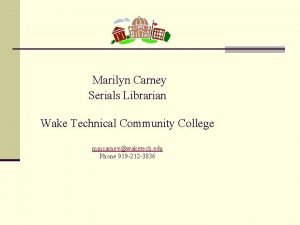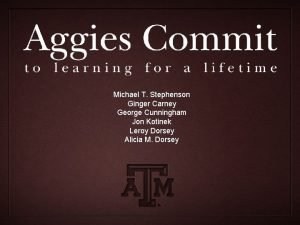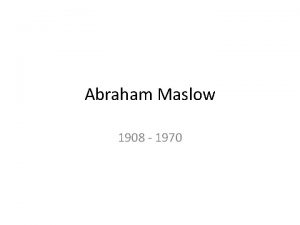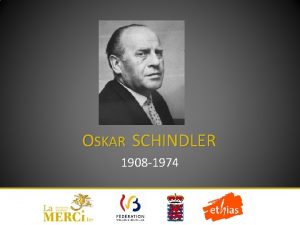William Carney 1840 1908 William Carney served in



- Slides: 3

William Carney - 1840 -1908 • William Carney served in the first all African American • regiment - 54 th Massachusetts. He and the men of the 54 th • stormed the Confederate Fort Wagner that guarded • Charleston Harbor in South Carolina. Carney kept the flag • from hitting the ground when the flag bearer was killed. Carney • was shot and almost died. Over 200 of the 600 who led the attack • lost their lives. He became a sergeant after the battle and became • the first African American to receive the Medal of Honor in 1900.

Philip Bazaar 1838 -1923 • Philip Bazaar was born in Chile and immigrated to the United States only to find the U. S. in Civil War over slavery and states’ rights. He made his home in New Bedford, Massachusetts and quickly joined the Union cause thereafter. He joined the Navy and was assigned to the side paddlewheeler the USS Santiago de Cuba. Philip was in two attacks on the Confederate held Fort Fisher, one in 1864 which was a failure and the second on January 15, 1865 which ended in success. Bazaar’s ship was part of a Union blockade. When the army attacked on land the Navy attacked from offshore with their gunboats. Bazaar took dispatches to the land generals under heavy fire and even returned fire and helped some of the wounded to safety. He received his Medal of Honor on June 22, 1865. First immigrant to receive the medal. •

Julia Ward Howe – The Battle Hymn of the Republic • Julia Ward Howe, Reverend James Clarke, and her husband Dr. Samuel Gridley Howe were touring Union army camps with President Lincoln to check sanitary conditions when they heard the tune “John Brown’s Body” being sung by soldiers. Reverend Clark suggested to Howe that she write new verses for the song, she did, and the song became known as the “The Battle Hymn of the Republic”. It became one of the most popular tunes of the Civil War and became synonymous with the Union cause.





